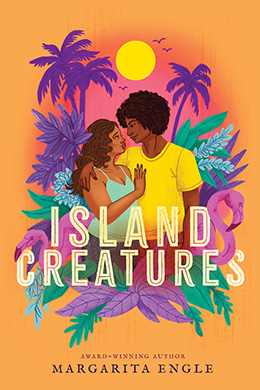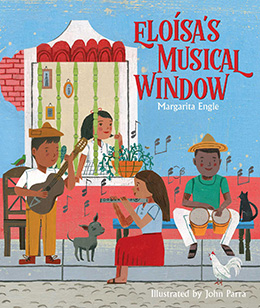Avi’s 2025 Summer Blog Series
Margarita Engle
From Avi: As I have for the last three summers, (summer of 2024, summer of 2023, summer of 2022) I’ve invited 13 admired authors to write for my blog for the next three months. I hope you’ll tune in each Tuesday to see who answered this year’s question, which we hope provides you with inspiration. And by the end of the summer, you’ll have new authors to follow!
What’s your favorite strategy for encouraging young people to read poetry?

Invite children and teens to walk in the park
sit under a tree
look
listen
enjoy
the natural
rhythms
of nature’s
music.
Invite them to choose any poetry book, funny or serious,
whatever they wish, metered and rhymed, or a novel
born wild, then released
in free verse.
Let young people reach their own answers
to the question: how does this poem
make you feel?
Give them permission to be honest.
There is no right or wrong answer, no pathway, no map.
Each poem can yield various meanings, depending on the age,
mood, experience, and daydreams of the reader.
Please do not ask that other dreaded question:
what does this poem mean?
It’s a challenge that terrifies everyone,
even adults who picture themselves failing to complete
an impossible fairy tale quest.
Assigning only one meaning to a poem
is like spinning straw into gold, it can’t be done,
there’s no alchemy for simplifying
the powerful beauty
of musical language
into something
less entrancing
than honest
emotions.
Show the child how to see rhythmic patterns
of vowel rhymes, and help them find times
when internal rhymes sound
like the chimes of bells
echoing within
open spaces
after line breaks
between stanzas
between pages.
Those open spaces are the magical places
where the minds of a poet and reader
rise up to meet
in midair
both
free
to see
new possibilities, perhaps a poem or sketch
scribbled by a child, in response to the finished verse
printed in a book.
Scatter a treasury of paper, pens, pencils
just in case a wave of inspiration
helps one of the children
or teenagers
feel like answering
a hopeful question:
how does this poem
make you feel?
Your example will be the difference
between a lifetime of metrophobia (the fear of poetry)
and a lifetime in sunlight or shade, reading, dreaming,
and maybe even beginning to scribble the future’s
musical verses.
Particulars
Margarita Engle is the Cuban-American author of many verse novels, including Wild Dreamers, a Pura Belpré Honor Book that was also long listed for the National Book Award. Wings in the Wild received an International Latino Book Award Gold Medal, and The Surrender Tree received a Newbery Honor. Other awards include Pura Belpré Medals, Walter Honors, Américas Awards, Jane Addams Award, PEN U.S.A., and the NSK Neustadt Prize. Margarita served as the national 2017–2019 Young People’s Poet Laureate. Her most recent picture book is Eloísa’s Musical Window, and her 2025 verse novel is Island Creatures.
Margarita was born in Los Angeles, but developed a deep attachment to her mother’s homeland during childhood summers with relatives on the island. She studied agronomy and botany along with creative writing, and now lives in central California with her entomologist husband and soccer playing Border Collie.


